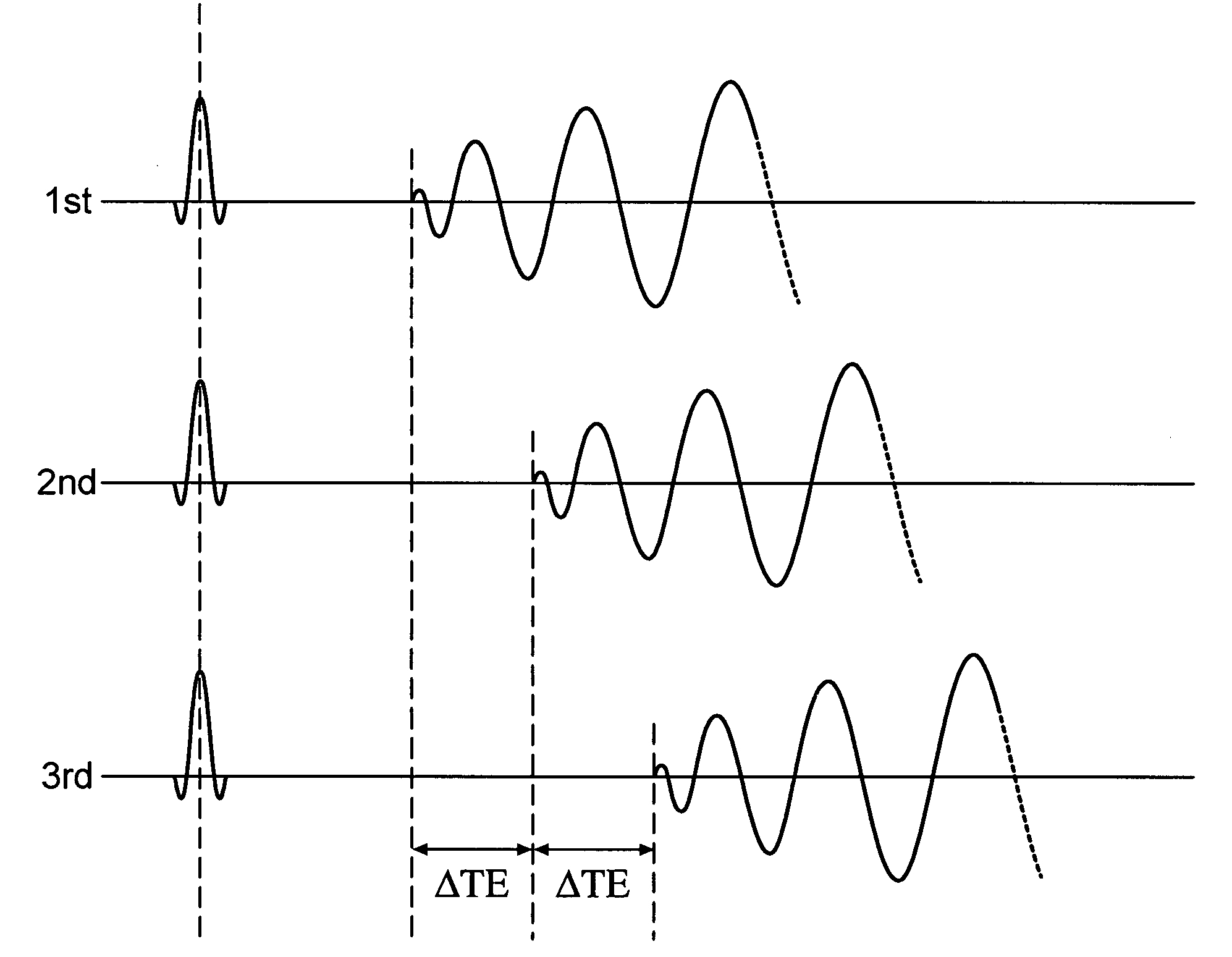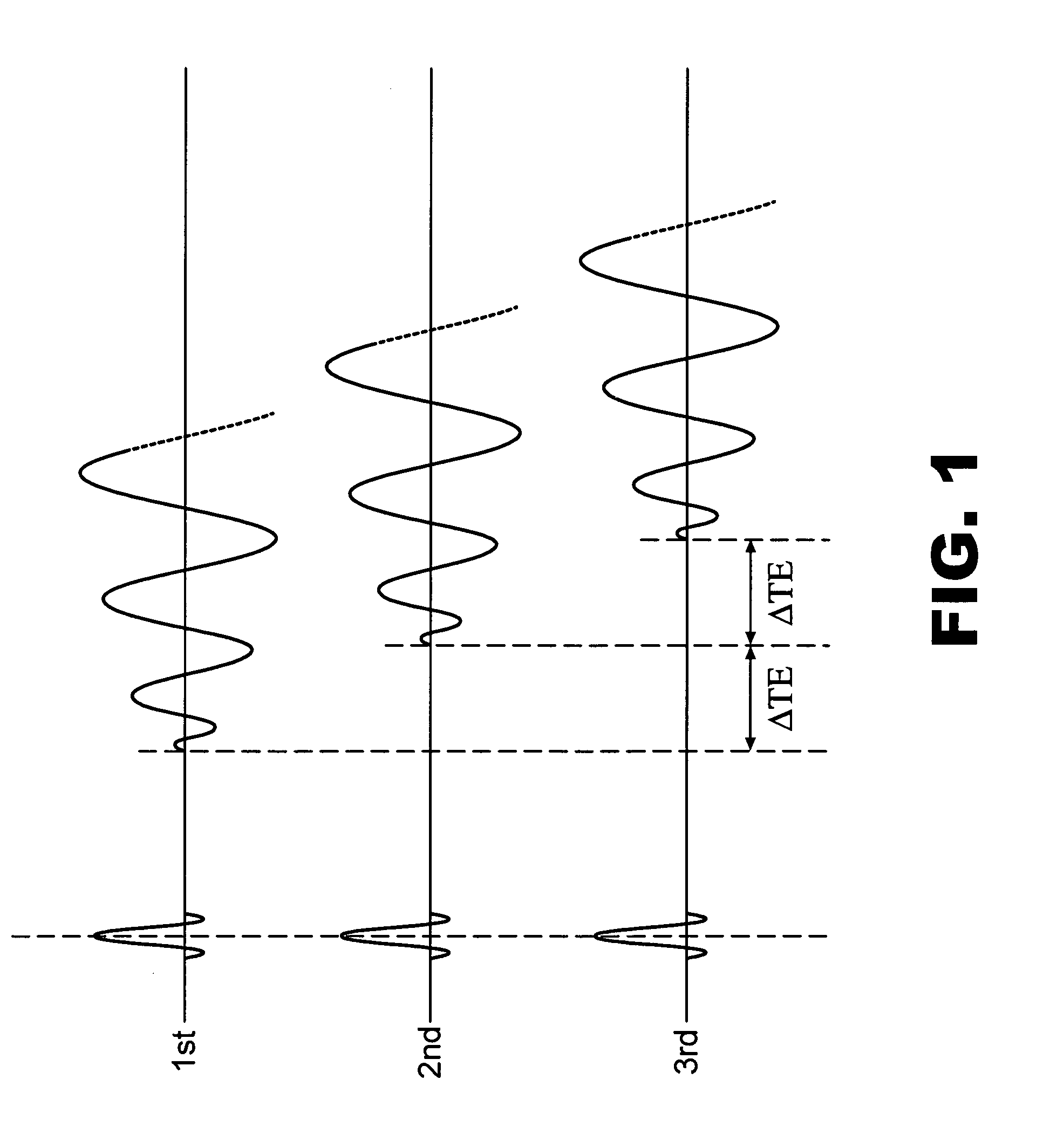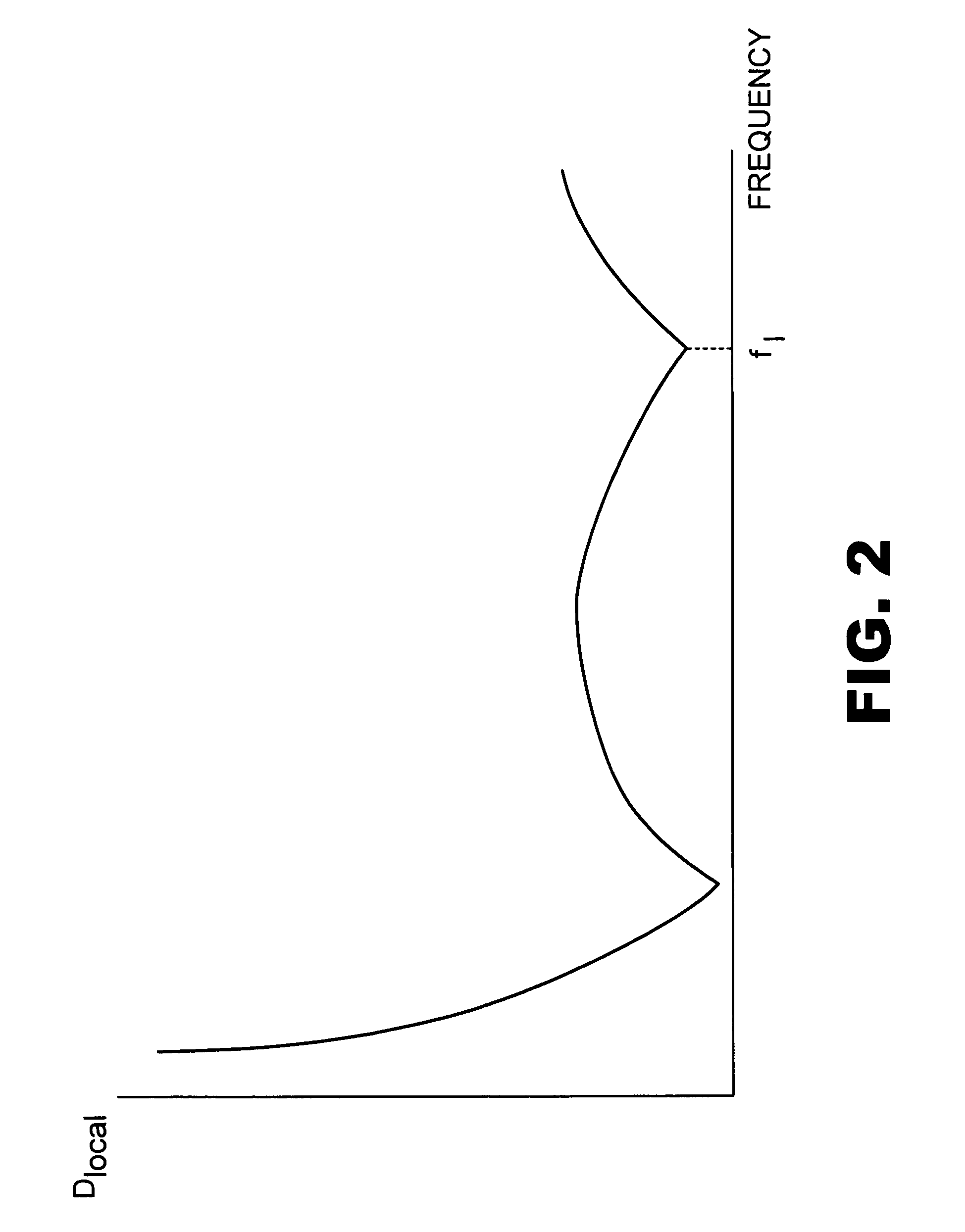Chemical species suppression for MRI imaging using spiral trajectories with off-resonance correction
a spiral trajectories and trajectories technology, applied in the field of fat suppression in mri imaging, can solve the problems of severe geometric distortion, blurred artifacts in the reconstructed image, and artifacts in magnetic resonance imaging (mri)
- Summary
- Abstract
- Description
- Claims
- Application Information
AI Technical Summary
Benefits of technology
Problems solved by technology
Method used
Image
Examples
Embodiment Construction
[0016]It is to be understood that the specific devices and processes illustrated in the attached drawings, and described in the following specification are simply exemplary embodiments of the inventive concepts defined in the appended claims. Hence, specific dimensions and other physical characteristics relating to the embodiments disclosed herein are not to be considered as limiting.
[0017]The long readout time of spiral trajectories leads to off-resonance signals that blur into neighboring pixels; spins from multiple off-resonance frequencies can all contribute to the voxel signal. However, it can generally be assumed that Bo inhomogeneity is smoothly varying across the FOV (this assumption will be referred to as ‘assumption(i)’). Thus, the average off-resonance frequency in any pixel is usually close to the true local Bo field strength. This concept is exploited in the conventional method to create an off-resonance frequency map in spiral imaging, in which the phase difference is ...
PUM
 Login to View More
Login to View More Abstract
Description
Claims
Application Information
 Login to View More
Login to View More - R&D
- Intellectual Property
- Life Sciences
- Materials
- Tech Scout
- Unparalleled Data Quality
- Higher Quality Content
- 60% Fewer Hallucinations
Browse by: Latest US Patents, China's latest patents, Technical Efficacy Thesaurus, Application Domain, Technology Topic, Popular Technical Reports.
© 2025 PatSnap. All rights reserved.Legal|Privacy policy|Modern Slavery Act Transparency Statement|Sitemap|About US| Contact US: help@patsnap.com



